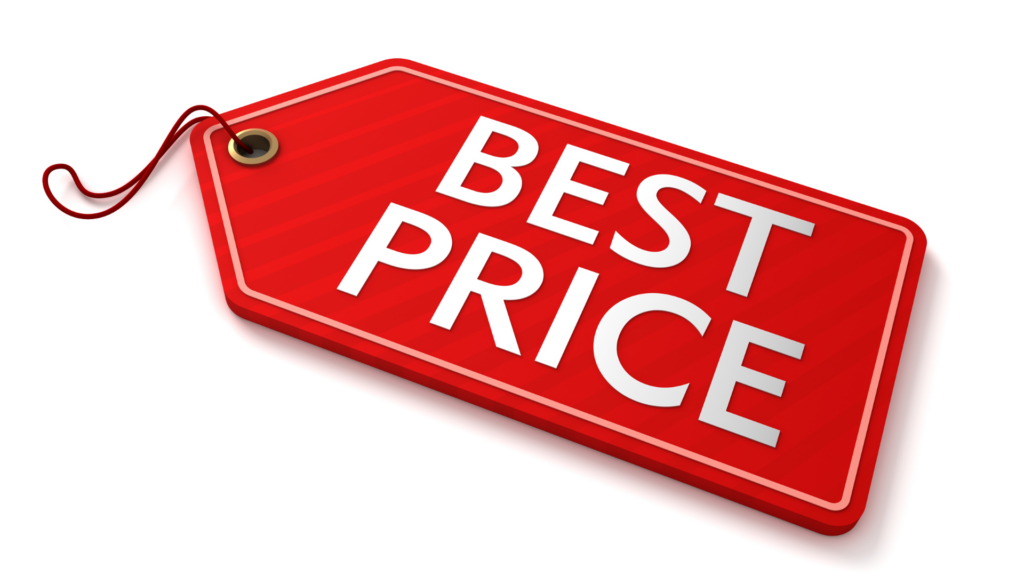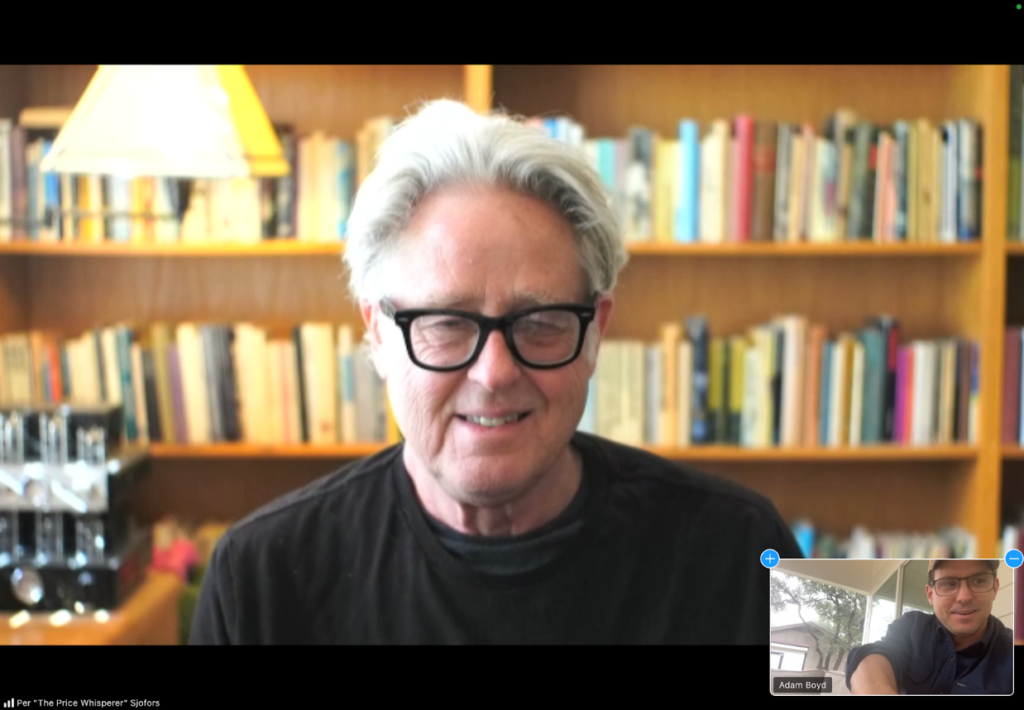Is the Price Right, Bob?

Thoughts on Pricing from Per Sjofors
Because I don’t think this guy really knows pricing.
But a guy named Per (pronounced “pear”) does.
And he gave me a few thoughts which we’ll cover. They include….
- Anchoring
- The optimal way to present the price
- How much to discount
- How to discount
I’ll share how this ties into direct B2B selling, at least tactically. (This is the sort of material we share with clients we train, so buckle up.)
The Price Whisperer
Pricing was an academic exercise in business school. But Rory Sutherland really got me thinking about price as a signal, and it became both an object of interest and a way to sell more…
The logic of price as a signal made sense to me, because my mental heuristic when I don’t know what to do (i.e. buying something new to me) is to buy the most expensive option, or one close to it. I assume that all the information I need is contained in the price, which is really a conversation between a seller and buyer.

(Where I default to the most expensive option to save myself hours.)
Then I heard Per Sjofors deliver a presentation on pricing, as it’s his area of expertise, and he unpacked pricing even more.
Per’s company is Sjofors (there are two dots over the first “o” in his last name, but I’m not sure how to create those on my keyboard), and they help companies appropriately priced.
Turns out institutional investors hire him during due diligence to find out if they can raise prices post-acquisition. Nice bit of information to know, huh? “We can buy a company selling at $X, and then increase prices to $X + 15%….”
We had a talk and here are some things he shared…..
Pricing Can Reduce Friction In Sales
But it has to be done strategically.
He tells the story of a restaurant needing to raise their prices (sound familiar?), but feeling the clientele would push back.
Per’s suggestion?
Raise the prices to the needed amount, but do two things at the same time:
- Put one much more expensive on the menu. It would have to be something new, but something priced with another 0 to really frame a comparison
- It would need to be the first thing the customers see on the menu. It couldn’t be at the bottom on the right, but at the top and on the left.
What happened? No one ever ordered the premium offer, but no one complained at all about the price increases everywhere else.
Per helped the man appropriately re-anchor.
He then shared that most companies present pricing in terms of good-better-best. Looked at software lately? This is what all software companies do in presenting prices online.

It’s a great way to get people to bite off the free version. But does it really move them to the higher-priced paid versions? Great question.
His research says that pricing needs to be framed in terms of “best, better, good,” so the opposite of what we typically see. The shock of the best price makes the better price more palatable.
Anchoring In Sales
Often, in selling services, especially B2B services, sellers have a standard rate. It may be equal to what others charge, or more. But they’re not typically laying down a premium rate (though it’s possible, and I encourage it) to anchor the buyer on a higher price.
What can they (and other sellers) do?
For years, I’ve worked with people to quantify the impact of either:
- Doing nothing;
- Doing something poorly; Or
- Seeing the upside of a project/investment/purchase going well
This serves to create a financial anchor for the buyer that’s well in excess of the seller’s price.
Doing this requires understanding all the potential losses and/or gains for the buyer. (Note: losses are more motivating than gains as we’re hardwired to avoid loss.) Which requires listening, patience, and knowing where to look.
In commercial finance, our clients are selling money at 1.5-3% per month to businesses that cannot get a standard bank loan because of their risk profile. The problem is that businesses think they should get bank rates, so asset-based lenders and factors have to fight against an expectation of 10% interest.
What do we have them do? They have to get the prospective client to add up what’s at stake if they don’t get money at all, and compare that to what they can do with the required money. Sometimes paying 25-30% annually to keep your business is preferable to a) selling equity permanently or b) shutting down the operation.
Doing this in an enterprise environment is more complicated and sophisticated than it is when you sell to middle-market companies or small businesses, but it’s doable. The guy I know who does it best? Chris Schaum, and here’s his framework. I highly recommend making that investment.
On Discounting
Oh, the discount.
Having worked with companies on sales for over a decade, I’ve seen management and sellers look to discounts to book business. But how much to discount, and when?
What did Per have to say here?

(Our Zoom visit, with me on the back porch.)
First, discounting to win business assumes the prospect actually wants to buy, and that price alone is the objection. In my training and coaching experience, this is rarely the real issue.
Second, discounting must be limited in the amount. Per says discounting should not exceed 20%. His research is across industries, price points and products/services, so this gives us a reliable model for assessing our own discounting needs. I know some readers believe they’re really a snowflake, but rarely have I seen a business that’s so unique.
Going below 20% in the discount actually works against sales – people buy LESS than they do at normal prices.
Third, discounting can only be used sparingly if pricing integrity on the standard list price is to be maintained.
Fourth, bundling is one of the better ways to “discount.” Instead of offering product A at $100 and product B at $50, bundle them together at $130. Apple has done this successfully for years and finally moved to unbundle to drive another 4 billion in annual revenue.
The Discount Request
In B2B sales, large potential customers will ask for a discount ahead of volume purchases. It sounds like,
“Hey, we’re a big deal. We’ll do a lot of business with you. Can you cut us a discount for future volume?”
It’d be great if customers were always 100% honest. But they’re not.
So one of the ways I’ve learned to handle this is to reply,
“Happy to do a discount for volume. Once the orders have come through. And as the volume comes through, we’ll retroactively apply that discount for all the volume you’re ordered.”
Selling isn’t for the faint of heart, and one has to be ready to handle sophisticated buyers.
By the way, Per mentioned that buyers in procurement train, on average, every six months in negotiations. If you’re going head to head, be prepared.
Some Caveats
Pricing doesn’t exist in a vacuum. Let’s be real.
Your price needs to reflect where you really are in the market. If no one has heard of you, and you don’t appropriately stand out in terms of something – delivery, support, customization, specialization, speed, etc… – you can’t demand some insane premium. You’ve not earned it.
Your competitive landscape matters, too. Yes, all of us want a monopoly, but in fragmented markets where people can’t tell the difference between each other, don’t try goosing prices without goosing how you’re positioned.
Pricing, Summarized
Pricing is the tip of the spear in strategy. It brings together demand, supply, and the appropriate exchange of value for meeting a need in a certain way. Too often, though, the psychology and science of pricing have been ignored when we go to market.
With Per’s help, we can bring them into the conversation to optimize sales and maximize price.
Want to know more about Per? You can read about his firm here.
Have questions about growing sales for yourself or your company? Email me.


